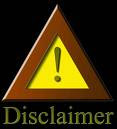By now most of you are familiar with or at least aware of SAS 99, Consideration of Fraud in a Financial Statement Audit, which requires the auditor to gather, assess, and respond to information regarding fraud that could lead to the risk of material misstatement in an organization's financial statements. Subsequently the AICPA issued the set of risk assessment audit standards requiring auditors to obtain a more in-depth understanding of an organization in order to better identify the risks of material misstatements in the financial statements they were auditing, including the risk of fraud. While these standards discuss financial reporting risks and misstatements of an organization's financial statements, there's also a call to address misappropriation of assets, i.e. theft of assets or fraudulent expenditures.
Most times when you read about the occurrence of fraud in a non-profit organization, it’s usually about theft or misappropriation of assets, and it usually involves cash; and these are the ones that make the papers. Most non-profits don't want those outside the organization to know that theft has occurred; it’s just not good PR, particularly if you're a local organization looking for donations from the public or some other donor who wants to know the money is being put to good use (not the bookkeeper’s vacation home). Those in the organization who have incentive, opportunity, and attitude to rationalize their behavior will generally "go for the green" if you let them. So how should this risk be addressed?
Familiar battle cries...."Where was the Board", "Where was management", "Why didn't the auditors catch this", just to name a few. You've heard them before.
Good governance by the Board includes financial oversight - we've addressed this in some of our previous Blogs. If the organization is small and doesn't have the luxury of adequate personnel to provide proper segregation of duties, someone on the Board, preferably someone with knowledge of financial matters, needs to be involved. Things for the Board to consider:
• review and signoff on monthly bank reconciliations and credit card statements
• obtain access to bank account, credit card, and general ledger information for review purposes
• require a second signature on all checks (or at least the larger ones - set a limit)
These or similar practices can be used by management where there's limited personnel and a shortage of controls. If possible, management should perform its own internal fraud risk assessment, focusing on the use of cash and related controls for cash receipts and disbursements. (see “Managing the Business Risk of Fraud: A Practical Guide”.
For us auditors, as we gain a thorough understanding of the organization’s control environment, policies, procedures, systems and controls (as outlined above), we need to then verify that such oversight and preventative measures are, in fact, in place and working. Consider using data extraction software and similar tools to identify certain populations or trends, i.e. payments to “cash”, individuals, similar vendors, as well as common addresses, etc.
A commonly used small business general ledger software package allows the user to “turn off” the audit trail feature, so a check can be generated and the payee subsequently changed in the system. Depending on the general ledger software and the ability to manipulate transactions in the software, consider examining original cancelled checks (or copies received directly from the bank) to ensure the payees and endorsements are consistent with the payee recorded in the general ledger.
Remember, non-profits don’t get bad press because their employees or volunteers steal office supplies and office furniture and equipment. When it comes to fraud risks and the related financial losses, “CASH IS KING”. Make sure this asset is well protected and being put to good use in achieving the organization’s mission.


0 comments:
Post a Comment